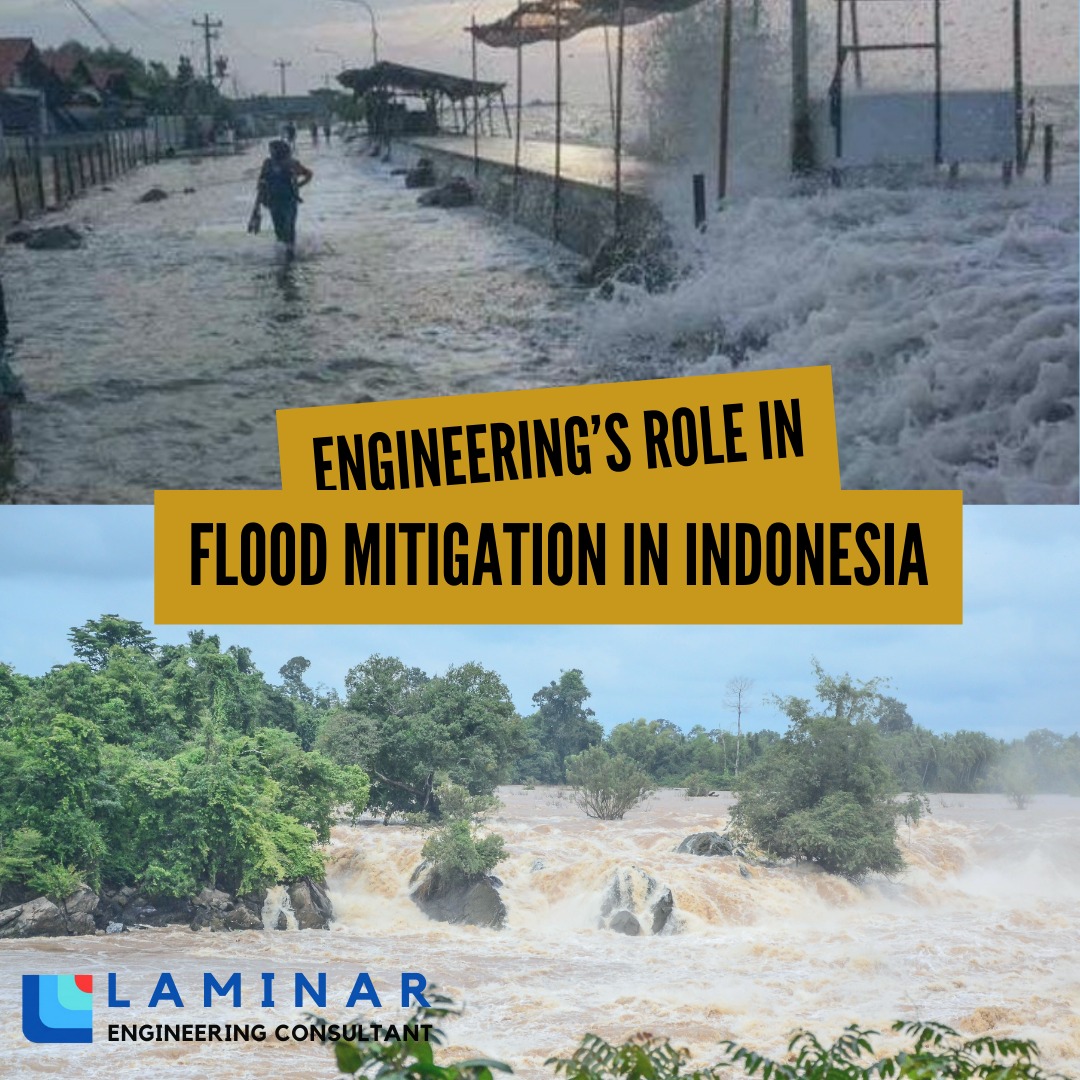Indonesia has a diverse range of flood types that pose recurring challenges. Floods are not only caused by natural factors such as extreme rainfall and river overflows but are also exacerbated by human activities, such as land-use change and unplanned development. Some types of floods that frequently occur in Indonesia include flash floods, river overflow floods, tidal floods, and upstream floods.
Flash floods, which often occur in areas with steep topography and deforested forests, carry large volumes of water at high speed and landslide materials. River overflow floods occur when river capacity cannot accommodate excessive water volume due to heavy rain or upstream discharge. Tidal floods, which are common in coastal areas, are caused by sea-level rise due to high tides or high waves. Upstream floods, as the name suggests, are floods whose water comes from other areas, usually from upstream rivers.
In facing these complex flood challenges, the role of engineering is very important. Engineers play a role in designing and building flood control infrastructure such as dikes, reservoirs, canals, and water pumps. In addition, engineering also contributes to the development of flood early warning systems, flood-prone area mapping, and spatial planning that considers flood risk. Through collaboration between various disciplines and the utilization of technology, it is hoped that engineering solutions can reduce the impact of floods and create a safer environment for the Indonesian people.

